
Digenea is a class of trematodes in the Platyhelminthes phylum, consisting of parasitic flatworms with a syncytial tegument and, usually, two suckers, one ventral and one oral. Adults commonly live within the digestive tract, but occur throughout the organ systems of all classes of vertebrates. Once thought to be related to the Monogenea, it is now recognised that they are closest to the Aspidogastrea and that the Monogenea are more closely allied with the Cestoda. Around 6,000 species have been described to date.
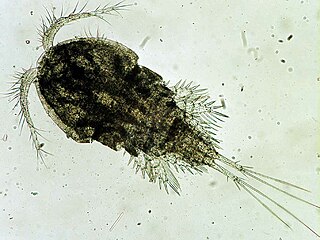
Cyclops is one of the most common genera of freshwater copepods, comprising over 400 species. Together with other similar-sized non-copepod fresh-water crustaceans, especially cladocera, they are commonly called water fleas. The name Cyclops comes from the Cyclops of Greek mythology, as they have a single large eye; in Cyclops, the eye may be either red or black.
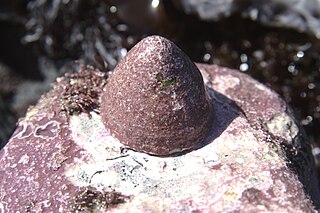
Acmaea is a genus of sea snails, specifically true limpets, marine gastropod mollusks in the family Acmaeidae, one of the families of true limpets.

The thorny-headed worm family Polymorphidae contains endoparasites which as adults feed mainly in fish and aquatic birds. When this taxon was erected by Meyer in 1931, a subfamily Polymorphinae was established in it. As the Polymorphidae as presently understood would then be monotypic, with no basal genera outside the Polymorphinae, the proposed subfamily is redundant for the time being and therefore most modern treatments simply omit it. Polymorphus minutus is an economically significant parasite in goose and duck farming.

Plagiorchiida is a large order of trematodes, synonymous to Echinostomida. They belong to the Digenea, a large subclass of flukes. This order contains relatively few significant parasites of humans.
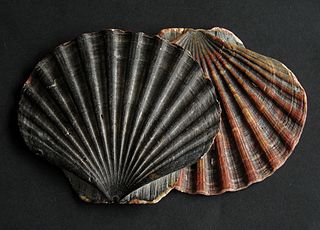
Pecten is a genus of large scallops or saltwater clams, marine bivalve molluscs in the family Pectinidae, the scallops. This is the type genus of the family.

Rhadinorhynchidae is a family of parasitic worms from the order Echinorhynchida.

Opisthorchiidae is a family of digenean trematodes. Opisthorchiidae have cosmopolitan distribution.
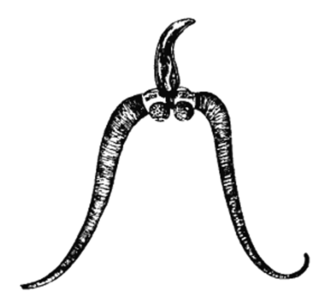
Bucephalidae is a family of trematodes that parasitize fish. They lack suckers, having instead a muscular organ called a "rhynchus" at the front end which they use to attach to their hosts. The characteristics of the rhynchus are used to help define the genera of the family. It is one of the largest digenean families, with 25 genera containing hundreds of described species. Bucephalids are cosmopolitan, having been recorded all over the world. They are parasites of fish from freshwater, marine, and brackish water habitat types.
Apocreadiidae is a family of parasitic worms in the class Trematoda.

Opecoelidae is a family of trematodes. It is the largest digenean family with over 90 genera and nearly 900 species, almost solely found in marine and freshwater teleost fishes. It was considered by Bray et al. to belong in the superfamily Opecoeloidea Ozaki, 1925 or the Brachycladioidea Odhner, 1905.
Coitocaecum is a genus of trematodes in the family Opecoelidae. It has been synonymised to Ozakia Wisniewski, 1934, Paradactylostomum Zhukov, 1972 nec Toman, 1992, and Pseudocoitocaecum Bilqees, 1972.
Decemtestis is a genus of trematodes in the family Opecoelidae. It has been synonymised with Allodecemtestis Hafeezullah, 1970.

Helicometra is a genus of trematodes in the class Opecoelidae. It is synonymous with AllostenoperaBaeva, 1968, MetahelicometraYamaguti, 1971, and StenoperaManter, 1933. Its type species is H. fasciata(Rudolphi, 1819). They are distinguished by their unique spiral uterus, from which their name is derived.
Opecoelus is a genus of trematodes in the family Opecoelidae.
Opegaster is a genus of trematodes in the family Opecoelidae.

Lepocreadiidae is a family of trematodes in the order Plagiorchiida.
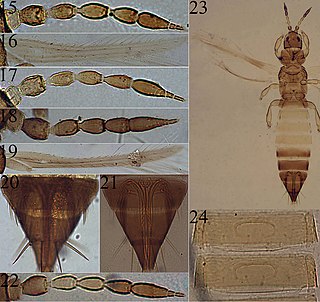
Anaphothrips is a genus of thrips belonging to the family Thripidae.
Cryptogonimidae is a family of trematodes belonging to the order Plagiorchiida.
Derogenidae is a family of trematodes belonging to the order Plagiorchiida.











